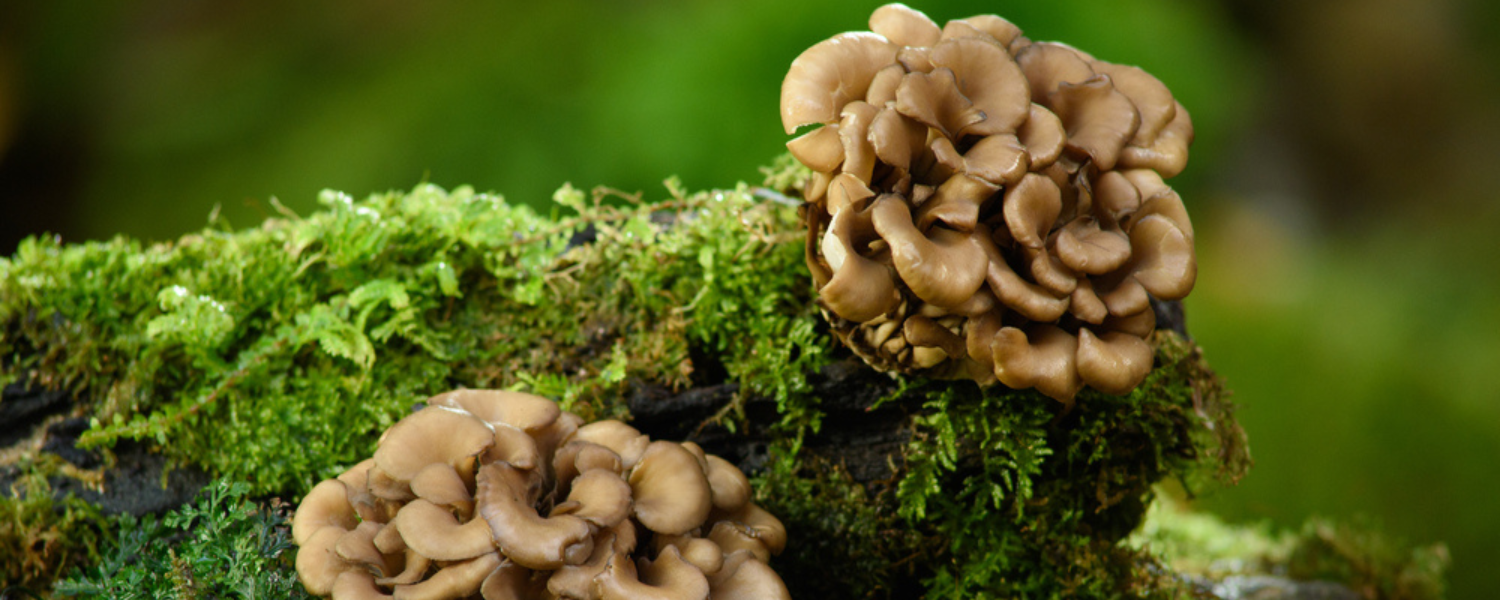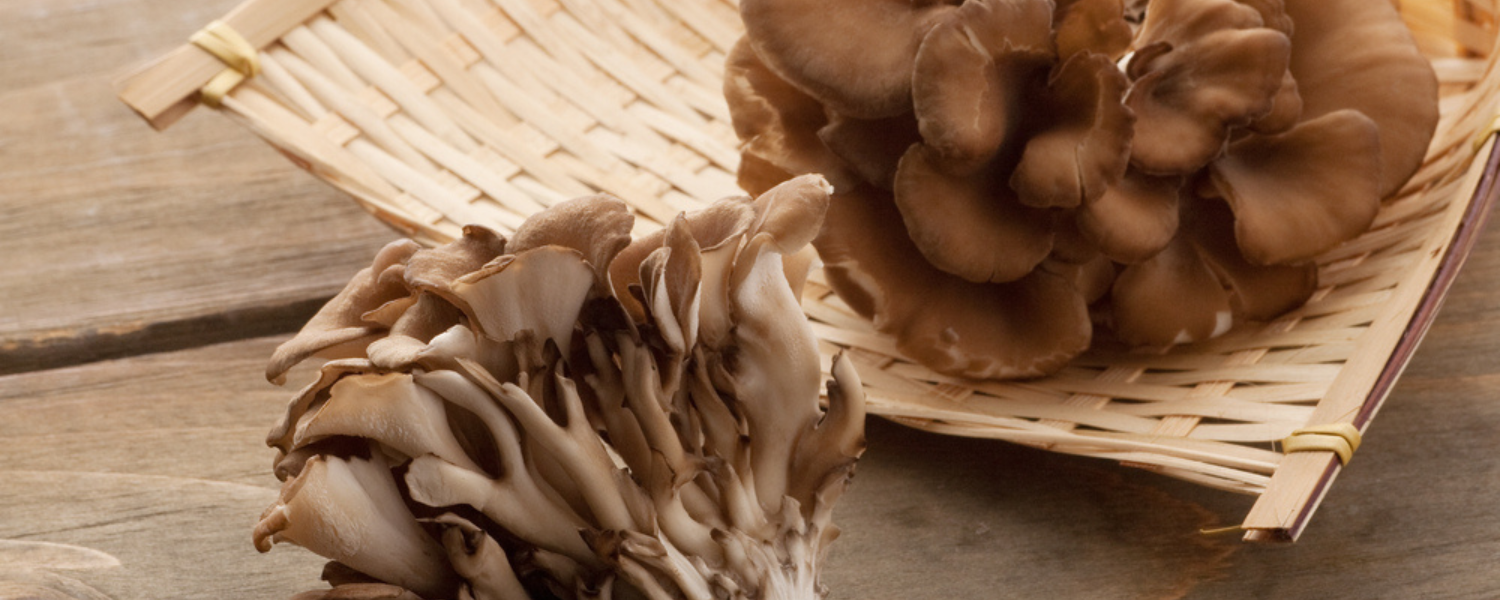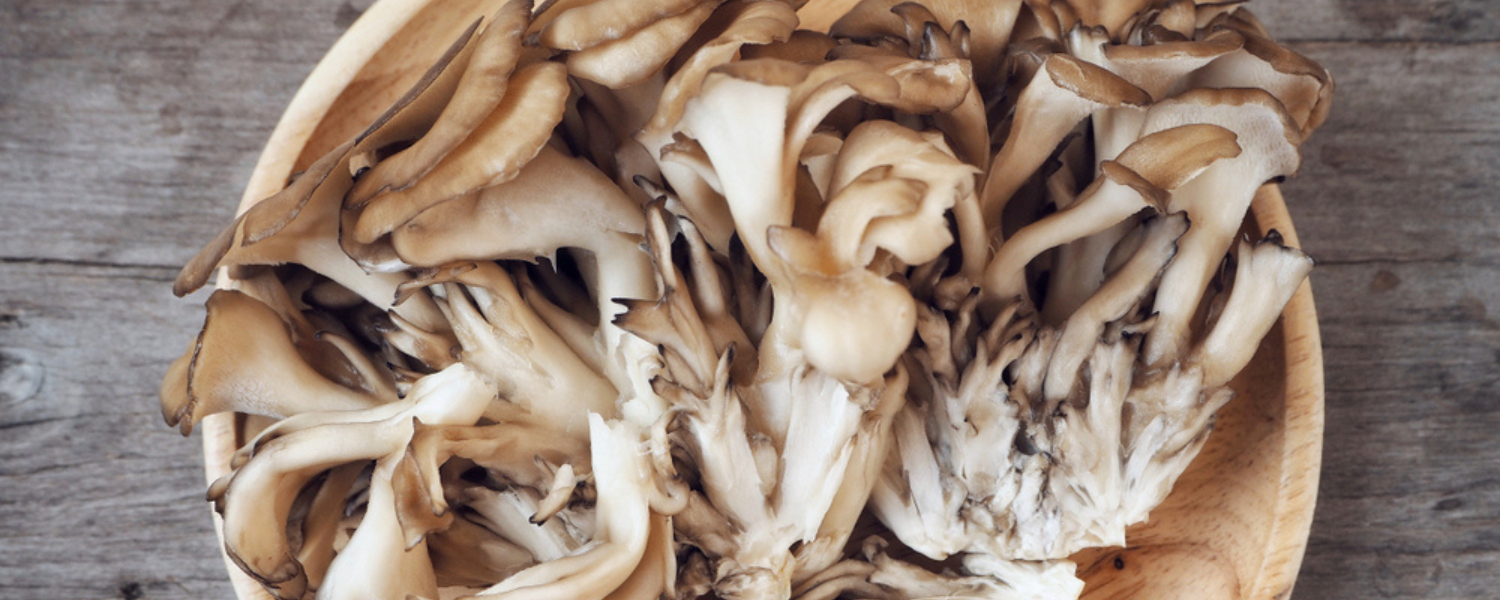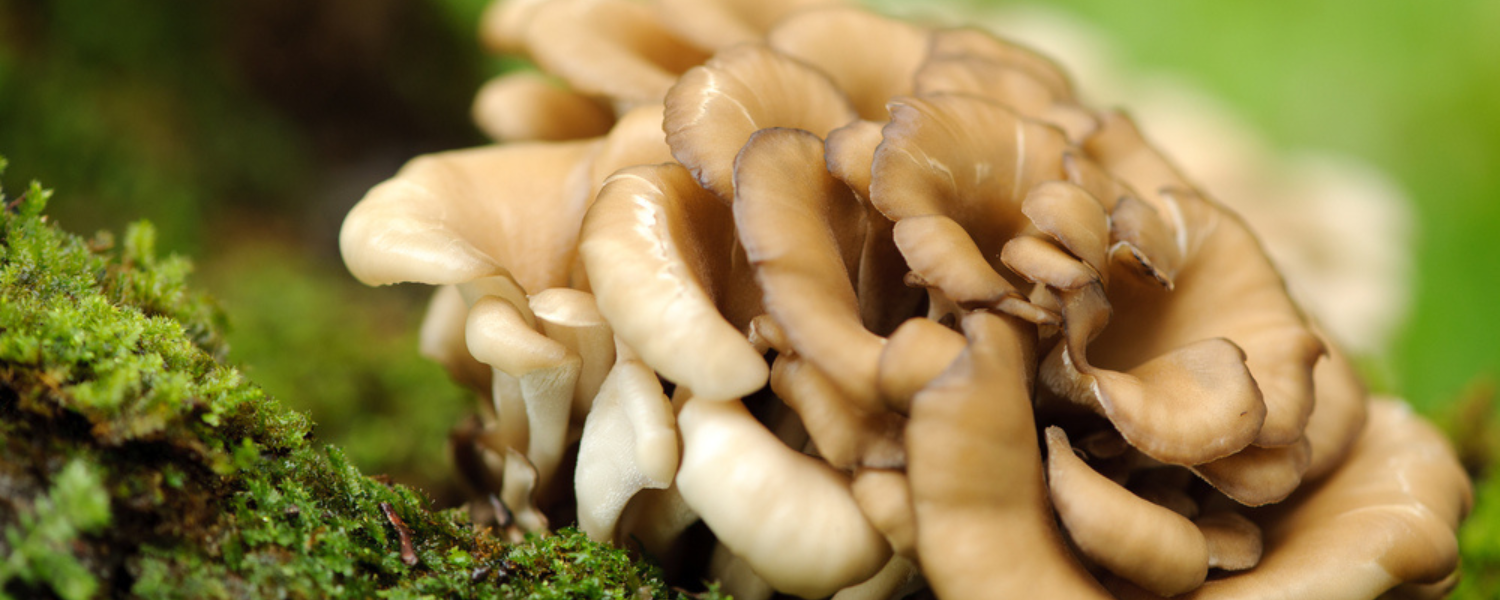Due to their therapeutic benefits, maitake mushrooms are widely grown. This particular type of mushroom has been observed to grow naturally near the bases of oak and other trees. It is indigenous to North America and Northeast Japan. However, because of its use, it is grown in many other places. Maitake mushroom cultivation outdoors requires more time than indoors.
This is likely a result of the fact that an indoor environment can sustain the necessary conditions for growth. Indoor cultivation requires a certain level of knowledge, and someone who is undertaking this work for the first time likely has to practice a few times before becoming proficient.
A mature cluster of maitake, which is pronounced "my-take", can weigh up to 50 pounds and resembles a hen perched atop a nest. This is the reason the mushrooms are known as "hen of the woods". Their enormous size conceals their mild, earthy flavor. They taste earthier than porcini mushrooms and lighter than shitake mushrooms.
Although flavor is a matter of taste, the following health advantages of cultivating (and eating) maitake mushrooms are widely accepted: They can strengthen the immune system and are high in antioxidants and vitamin D. Thus, consuming them can aid in protecting against viral and bacterial diseases. Keep reading to learn all about maitake mushrooms and how to cultivate them yourself!

How To Identify Maitake Mushrooms
Maitake mushrooms don't live for very long. At first, they smell good, but once they're completely grown, the smell turns bad. As they age, larger maitake mushrooms develop a lighter tan brown or grey hue. Maitake mushrooms look like a piece of broccoli or cauliflower from the bottom up, with stems that branch out.
Maitake clusters can range in size from 4 inches to 36 inches or more. The width and thickness of each cap can range from 3/4 of an inch to 3 inches. The best places to find maitake are near the base of dead or decaying trees, especially oak tree stumps. The northern United States, Canada, and China are where you can find them most frequently.
They can also thrive in regions of Europe with the ideal environment, as well as sporadically in the southeast and northwest of the United States. Maitake can start to grow in early fall and continue till late November, depending on the weather. Although maitake mushrooms lack gills, they do produce a white spore print.
How To Grow Maitake Mushrooms
You can try growing maitake mushrooms at home if you truly like them. However, they typically don't develop as well at home as they do in the wild. By making every effort to mimic the natural growing circumstances of maitake mushrooms, you can increase your chances of success.
To make it work, you don't need need an oak tree at full growth in your yard, but do your best to mimic how they typically develop. The procedure should be very familiar to you if you've ever grown shiitake mushrooms. Follow these steps to grow your own maitake mushrooms:
- Get an oak log that is at least 3 feet long and 6 inches wide to start. It should spend at least six hours in cold water.
- Drill 1.5-inch deep holes along the length of the log using a 5/16ths drill bit. Aim for roughly 30 evenly spaced holes.
- The best way to inoculate your log is with dowels. You can try producing your own dowels and generating your own starter spawn from wild maitake. However, purchasing pre-inoculated maitake dowels online is typically simpler.
- Use cheese wax to seal the log shut once you've hammered your dowels into it.
- Using a brush, coat the dowel holes with the melted wax, making sure to completely seal the holes. The wax will aid in preventing competing bacteria, fungi, and insects from entering your log.
- Your log has to sit outside in a moist environment for at least six months. To lessen the chance of mold and other fungi colonizing the log, keep it elevated off the ground.
- To keep your log wet, you'll need to water it. Normally, watering your log once every two weeks is sufficient, but you can do more if you see that it is becoming dry.
- After six months, the areas where the dowels were inserted will start to sprout mushroom pins. Your log is ready to be shocked into beginning to grow when you see this sign.
- For a full 24 hours, soak the log in ice water to assist the developing process get off to a great start. When you remove the mushrooms from the freezing water, this will cause the maitake to start to sprout.
Compared to many other varieties of mushrooms, maitake develops more slowly. You might have to wait six weeks or longer for the mushroom clusters to regenerate after your first harvest. The log may need a few years to reach full maturity and begin producing a good yield.

Harvesting & Cleaning Maitake Mushrooms
Maitake mushrooms require more cleaning than most other species of mushrooms since they grow in clusters amid a lot of dirt. There are many nooks and crannies where debris like twigs and dirt might get stuck. Remove any noticeable leaves, sticks, or other organic stuff that may be on the mushrooms by picking them off first. Use a soft brush, such as a toothbrush, to remove any remaining soil from the mushroom.
Most of the older, woody, and tougher portions of the mushroom at the base need to be cut off with a sharp knife and thrown away. Additionally, you should remove and discard any portions that appear to be moldy, damaged, or insect-affected. Like other kinds of mushrooms, maitake should not be soaked since they will absorb too much water and become mushy and soggy. Instead, after brushing each mushroom piece off, wipe it with a damp paper towel. Any remaining dirt will be removed with the aid of this.
Storing Maitake Mushrooms
Since maitake mushrooms don't have gills like most other types of mushrooms, they tend to store better and don't absorb as much water when they're being kept. Maitake freezes nicely no matter how they are prepared. They should be divided into pieces, frozen one at a time on a cookie sheet, and then placed in an airtight bag. For roughly 6 months in the freezer, they'll stay fresh.
They can also be dried by being thinly sliced and put in a food dehydrator until they become brittle and snap in half with ease. However, drying will reduce some of the nutrition and flavor of the maitake. Both freezing and dehydrating are viable options for storage based on your preferences.

Health Benefits Of Maitake Mushrooms
Vitamin D Content
Vitamin D, which is essential for healthy bone formation and the maintenance of a strong neurological system, is present in maitake mushrooms. While vitamin D is produced by your skin when it is exposed to sunshine, a maitake meal will assist in resupplying this important vitamin.
Immune System Boost
The polysaccharides in maitake mushrooms aid to increase the activity of immune system cells. This aids in the body's ability to combat bacterial and viral illnesses before they have a chance to overwhelm the immune system.
Antioxidants
Oxidation is a normal process that, if left unchecked, can cause the body's cells to quickly degrade. Antioxidants found in maitake mushrooms block these chain reactions, halting further oxidation.
Diabetes Management
Maitake mushrooms are reported to lower blood sugar levels. Additionally, the mushrooms contain trace elements that are essential for preventing insulin resistance, a condition brought on by the body's failure to react to insulin control.

Conclusion
Maitake mushrooms are found in temperate forests all over the world. Large, flat heads and sturdy stems give these mushrooms a striking look. Maitake mushrooms have been more well-known as a culinary ingredient in recent years. They have been used for centuries in traditional Chinese medicine. Maitake mushrooms can be used in a wide range of cuisines, including stir-fries, soups, and risottos. They complement many other foods thanks to their mildly sweet and nutty flavor.
It's not too difficult to grow maitake mushrooms at home. They may be cultivated on logs, on straw or leaf beds, or both. Once the mushrooms are established, they will continue to produce fruit bodies, which are the edible portion of the mushroom, for a number of years. Maintaining a wet environment and allowing for ample fresh air movement are crucial for maximum results. In the spring and summer, maitake mushrooms can be gathered.

